The First Month of Trump As Presented by Foreign Policy’s Experts
In
Log in if you are already registered
In U.S., national media love presidents. U.S. local and regional media love them even more. Media studies affirm this characteristic of American political communications. Since 1953 about twice as many stories were favorable to the president as were
The debates have risen. Are mainstream media presenting President Trump in a false negative way? Is Trump insulting news media? The president’s team has distributed “Mainstream Media Accountability Survey” once again, asking supporters about their opinion on the issue and for “help to defend our movement from the outrageous attacks from the media.”
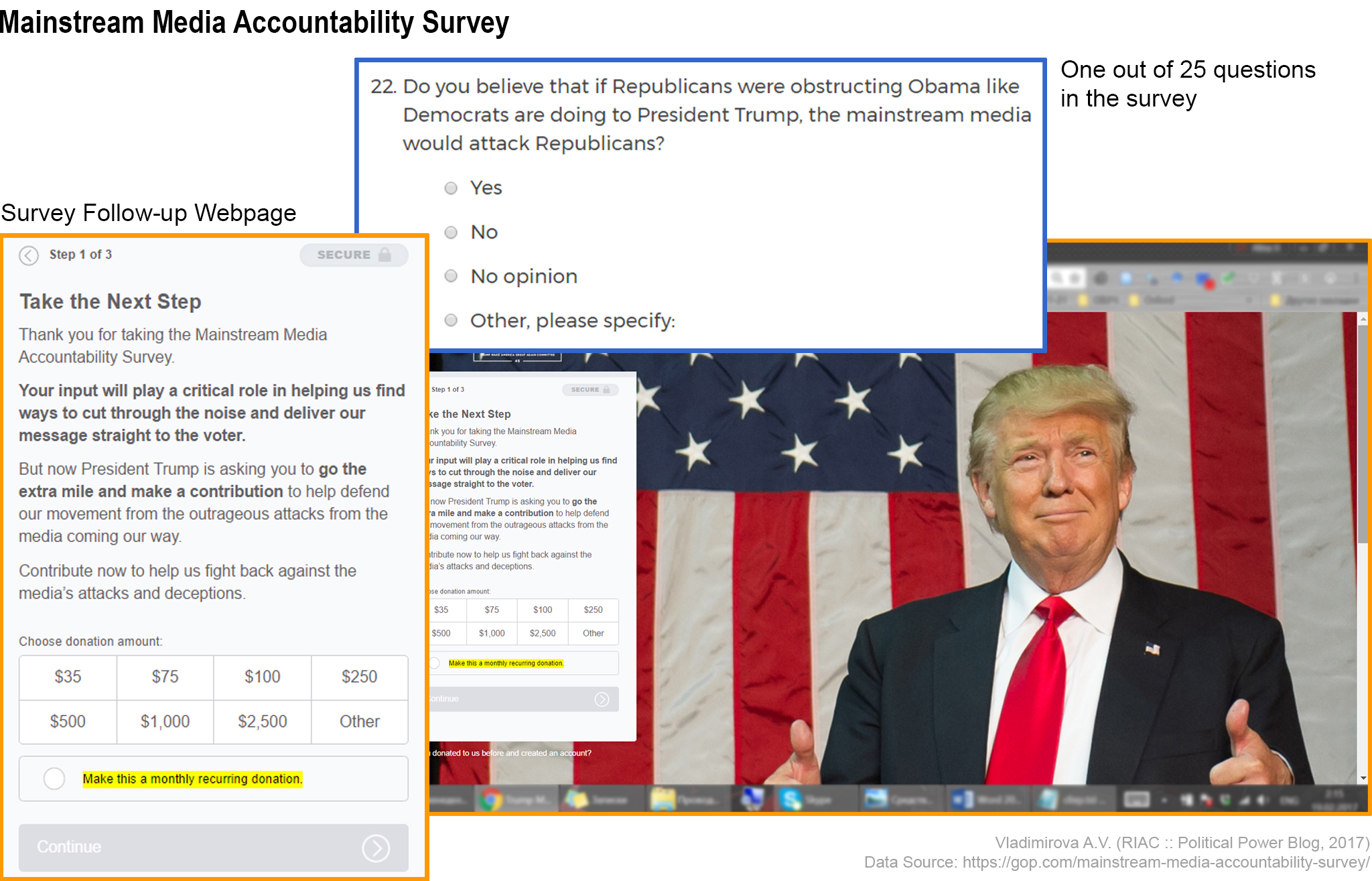
Some journalists called this survey “shocking” and “deranged”, others tried to explain that it is actually not a survey, but “a way to fundraise”. However, some of the media have invited their audiences to participate in even more biased surveys-like activities. For example, on February 20, Fox 13 News celebrated the President Day by posting not the most appealing photo of Trump at their Facebook page and has suggested
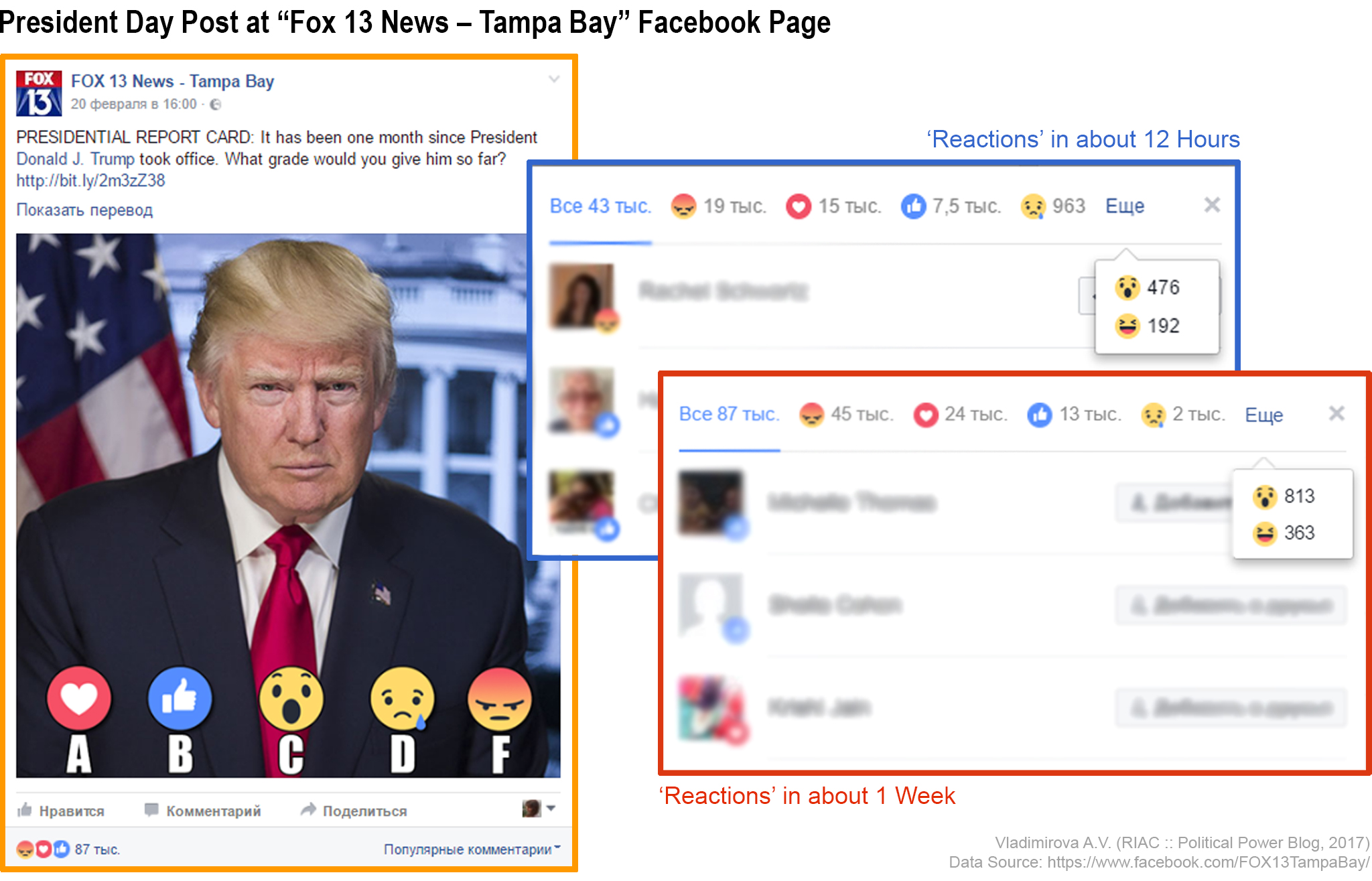
President’s initial impressions are also mixed. Trump said that for the first month he would give himself an “A plus” for effort, an “A” for achievement and “C or a C plus” on messaging. Trump is not satisfied with mainstream media presentation of him and his movement in a negative tone. But what about media targeting leaders from government, business, finance, and the academic world? Do experts have
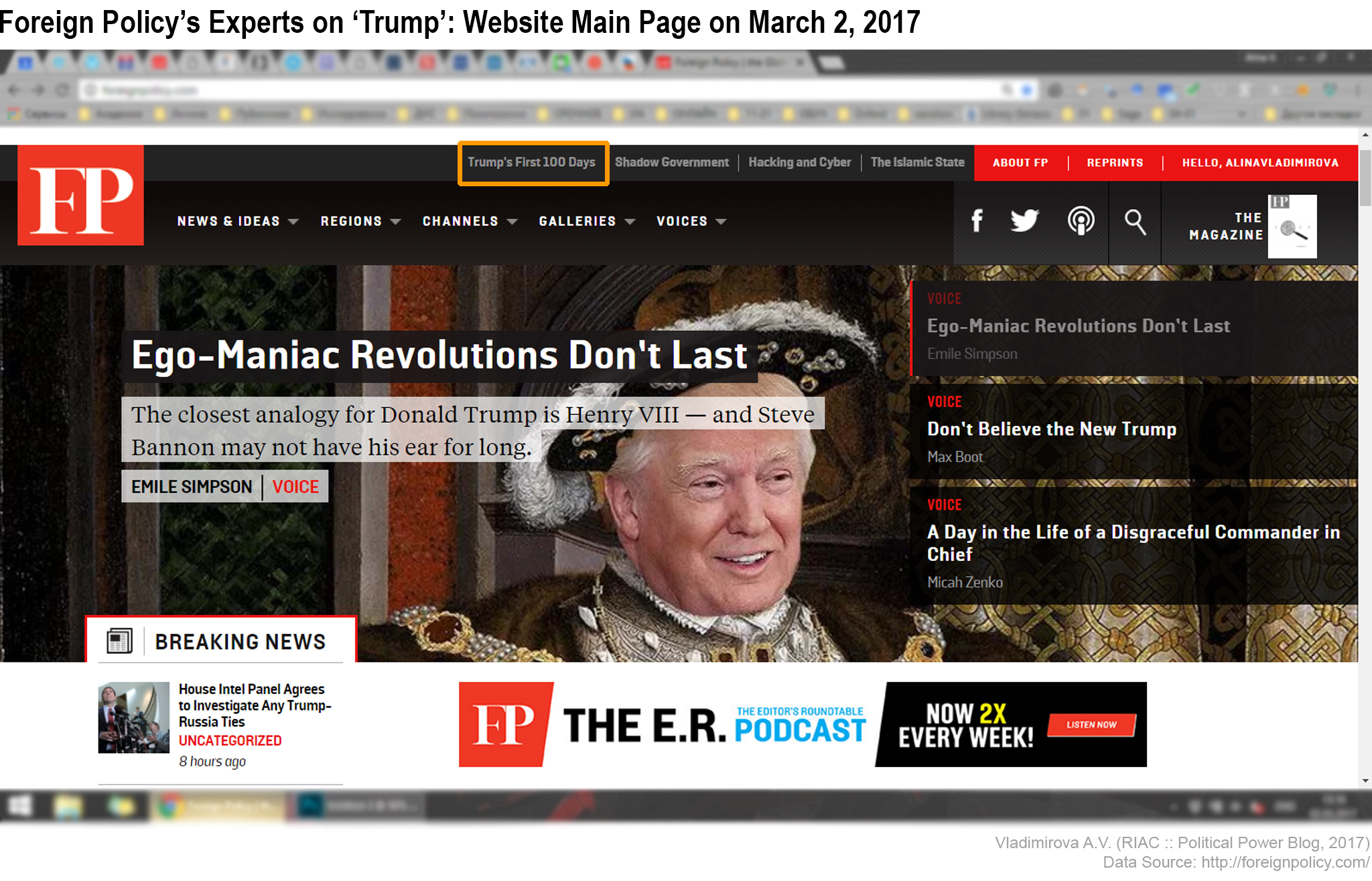
No surprise that publications on Trump can be found at the FP main page. Sometimes all three top stories are devoted to the new U.S. president. This
As the inauguration took place on January 20 and the first working day of Trump as president was Monday, January 23, I counted four weeks from this date. During ‘the first month of Trump’, from January 23,
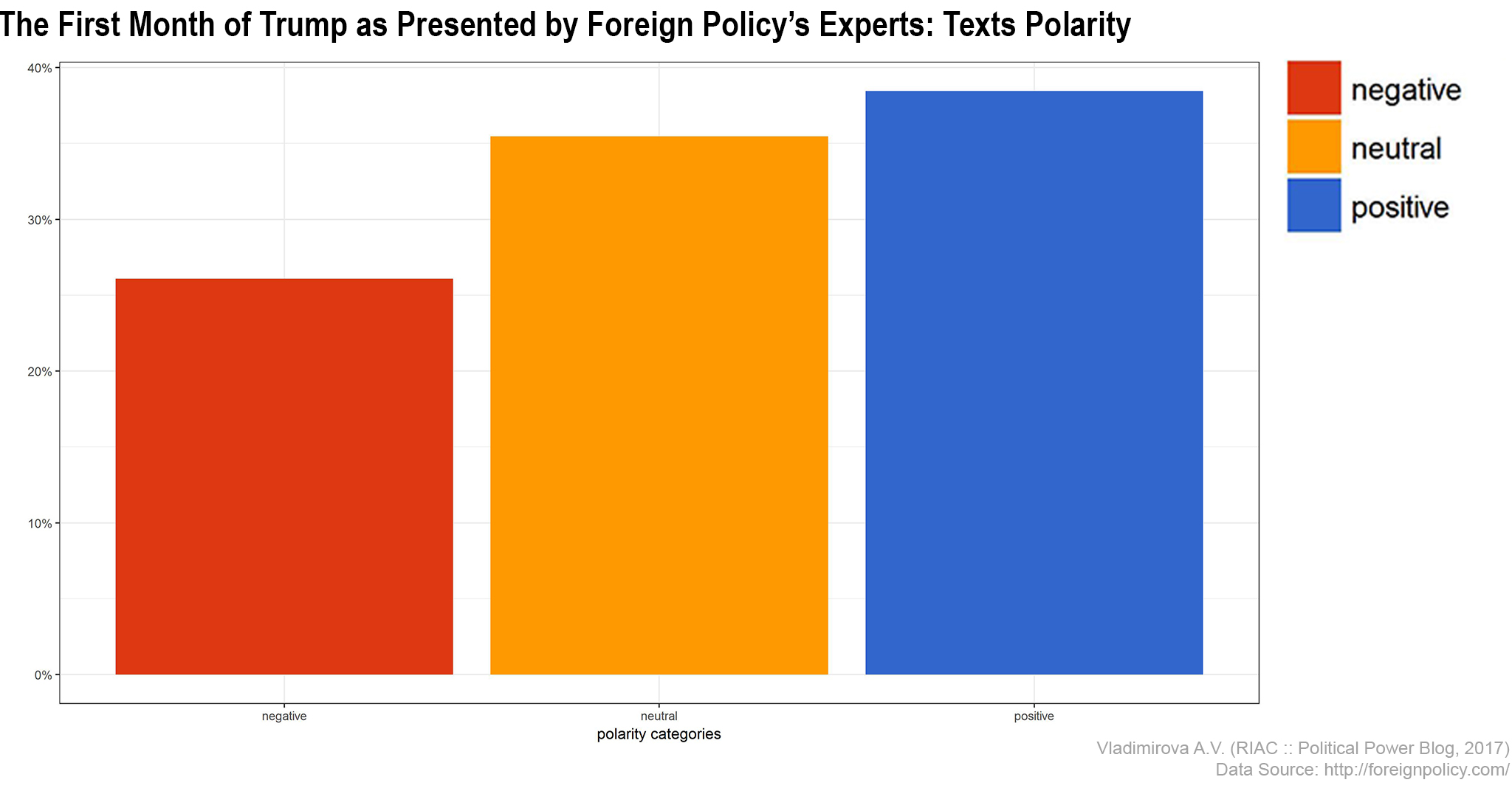
As we can see, 26% of all items were recognized as ‘negative’ and that is not a bad result considering discussions on
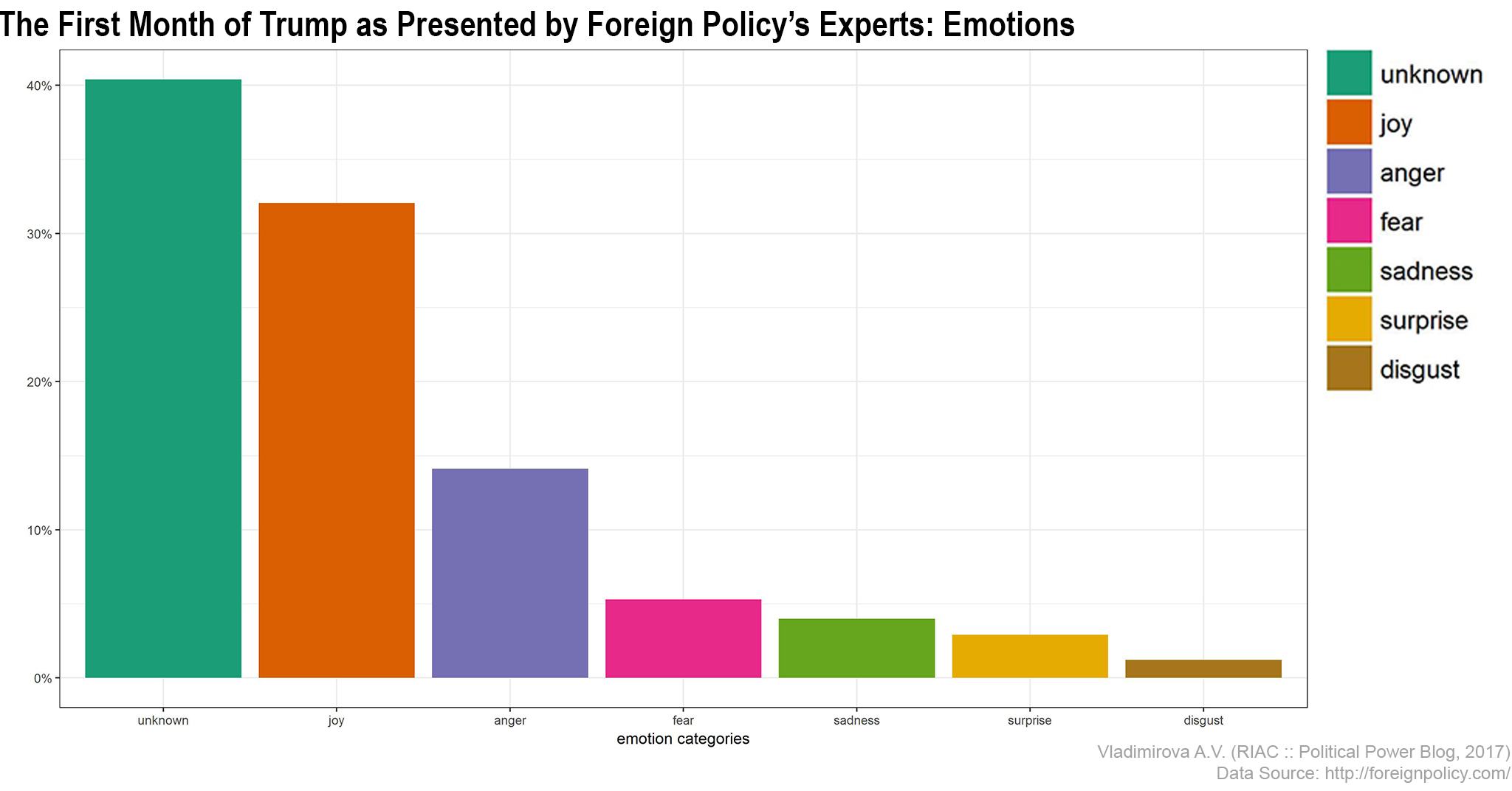
The package ‘sentiment’ allows to code six basic emotions using WordNet-Affect classification. A share of uncategorized paragraphs is big, what was expected considering nature of analyzed texts. If we look at the same item on U.S. withdrawal from TTP, we note that it is actually a fact with positive polarity and with
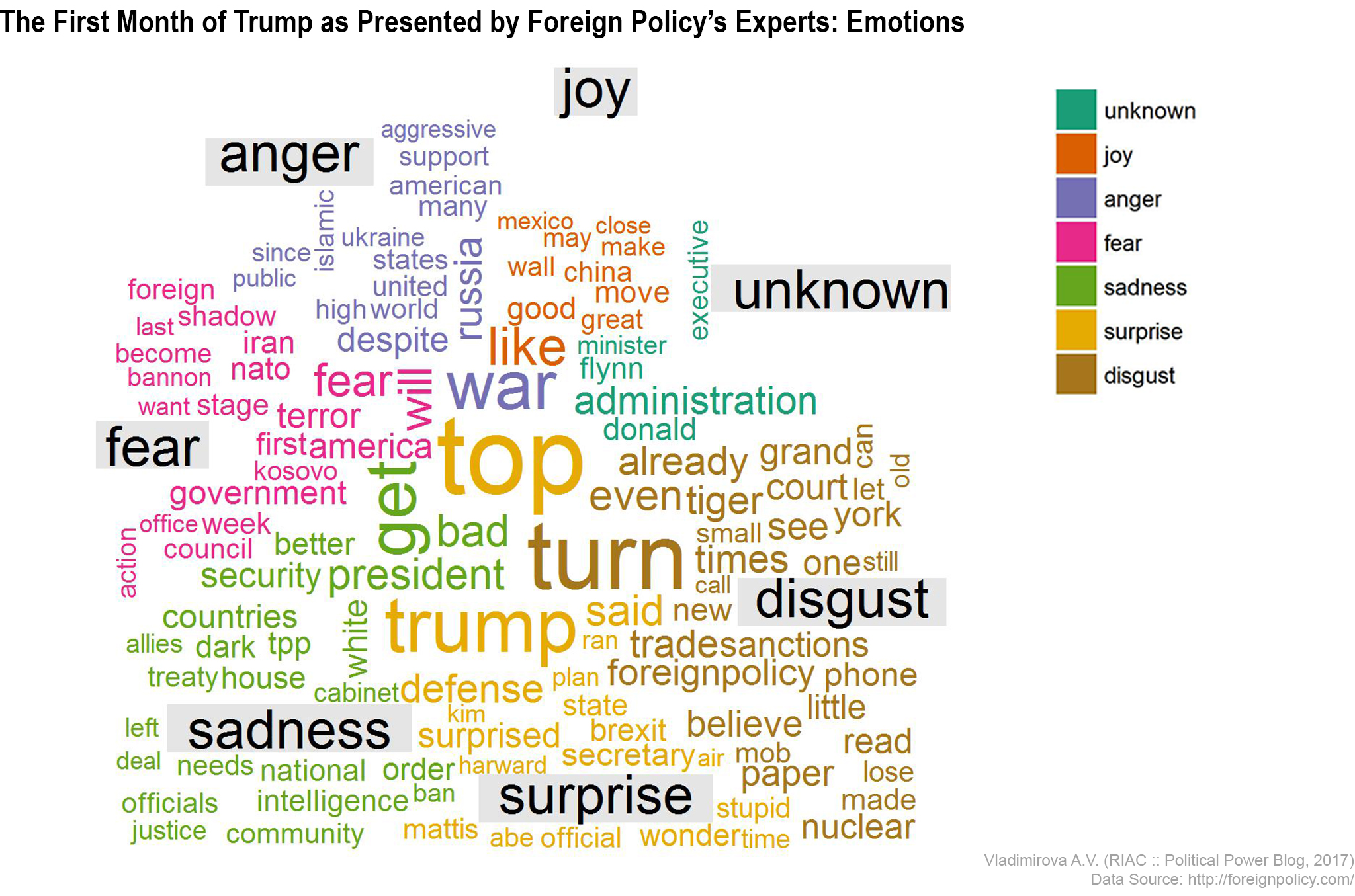
It is useful to present these results on emotions using traditional content analysis visualization ‘word cloud’ because histogram with so many items in ‘joy’ category can lead to misinterpretations. As it clearly seen, Trump main characteristic is ‘surprise’ during his first month. Quite interesting, especially because RIAC experts that do qualitative analysis came to the same conclusion. TTP went into ‘sadness’ category together with ‘allies’, ‘Obama’ and ‘white’, ‘house’. Seems FP experts think something good happened to China and express anger about Russia in texts on Trump. Unfortunately, terms ‘war’ and ‘sanction’ are very frequent, which made us think that use of hard power would possible increase. Even though Trump didn’t use terms ‘economic weapon’, ‘pressure’ or ‘sanctions’ when he explained a switch from TPP to bilateral treaties, his phrase “if someone misbehaves we will send a letter of termination” did implicitly said about these foreign policy means.
Vladimirova A.V. (RIAC :: Political Power Blog, 2017) Data Source: http://foreignpolicy.com/
Finally, let’s also look at trends in texts polarity. Following a common recommendation to include a step before and a step after the period analyzed, I have increased data set and now it consists of 2724 items on Trump taken from 546 publications between January, 16 and February, 26. The histogram shows the same turn as FP main web page was demonstrating during last few weeks - experts moved from positive assessments to negatives ones, however, this trend is not absolute. The fifth week of Trump in office reveals a different pattern – experts write less and mainly in neutral tone. Probably the first month of Trump has surprised experts (and not only them). Thus, Trump decisions could cause negative feelings. Now it is time to calm down and get used to the new U.S. administration. As things falling into a rut and Mr.Trump is learning how to be President Trump, assessments could change. So, with the FP staff, we are looking forward to the ‘Trump’s First 100 Days’.
1. Riloff E., Wiebe J. Learning Extraction Patterns for Subjective Expressions. // Proceedings of the 2003 Conference on Empirical Methods in Natural Language Processing. Association for Computational Linguistics, 2003. С. 105–112.
2. Strapparava C., Valitutti A. WordNet Affect: An Affective Extension of WordNet. // Proceedings of the Fourth International Conference on Language Resources and Evaluation (LREC’04). 2004. Vol. 4. P. 1083–1086.




